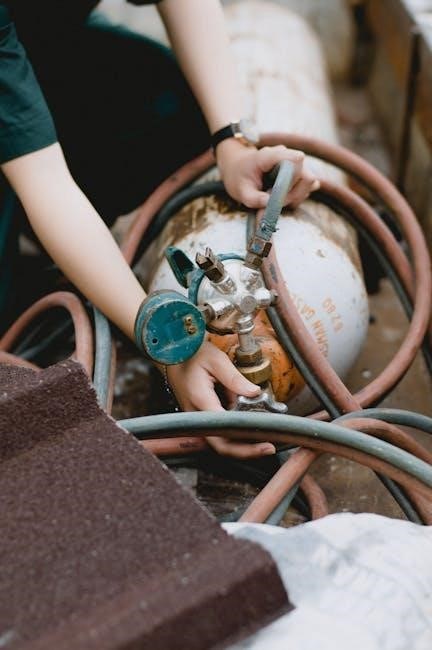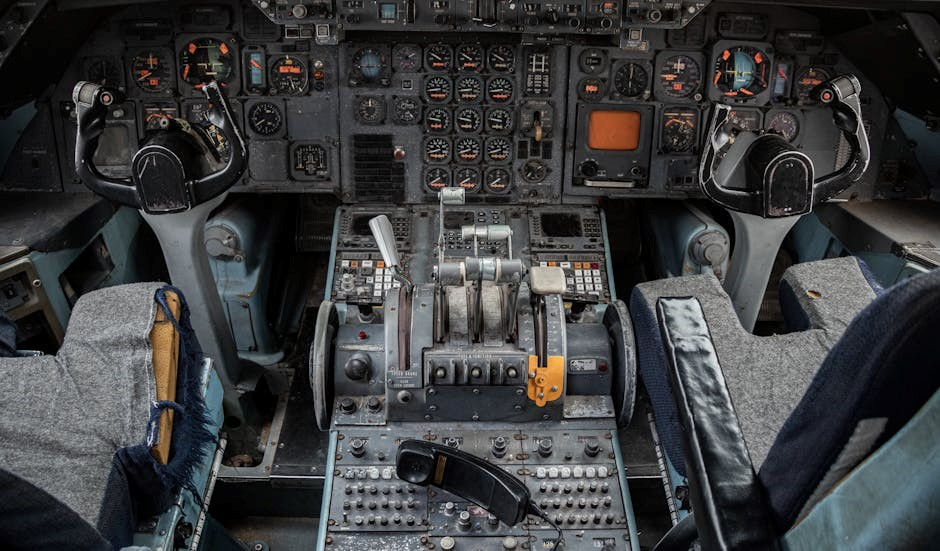Dometic Air Handler with Adjustable Vents: A Comprehensive Guide
Welcome! This guide provides complete information about the Dometic Air Handler, focusing on adjustable vents and manual controls. This is essential for RV users, boat owners, and anyone seeking climate control. Learn about optimized airflow and customized settings.
Dometic air handlers are integral components of climate control systems designed for recreational vehicles, boats, and other mobile living spaces. These units circulate air, providing both heating and cooling to ensure optimal comfort. Known for their durability and efficiency, Dometic air handlers are engineered to withstand the rigors of mobile environments, making them a popular choice among RV users and boat owners worldwide. The AH-Elite control system, for example, is a microcontroller-based unit designed for use with direct expansion, reverse-cycle air conditioning systems, emphasizing Dometic’s commitment to advanced technology.
A key feature of Dometic air handlers is their compatibility with various Dometic air conditioning models, such as the Blizzard NXT, Brisk II, and Penguin II. This compatibility ensures seamless integration and efficient performance. Dometic also offers a range of air distribution boxes (ADBs), which enhance airflow and distribution throughout the space. These ADBs often come with adjustable vents, allowing users to customize airflow to meet their specific needs. Dometic’s reputation for quality and innovation makes them a trusted brand in mobile climate control.
Understanding Manual Controls in Dometic Air Handlers
Manual controls in Dometic air handlers offer a straightforward and reliable way to manage your RV or boat’s climate. These controls typically consist of knobs and switches that allow you to adjust the temperature and fan speed directly. Unlike electronic systems, manual controls provide a tactile experience, making adjustments simple even without digital displays. This simplicity can be particularly beneficial in situations where you prefer a no-frills approach or when dealing with older Dometic models.
One common feature of manual control systems is the thermostatic control, which allows users to set and maintain a desired temperature. The turning knobs enable you to easily adjust the temperature and blower speed. The Dometic Ceiling Assembly, designed for use with the Blizzard NXT, Brisk II, or Penguin II air conditioners, often includes manual controls for adjusting airflow. Understanding these controls is essential for optimizing comfort and efficiency within your mobile living space. By mastering the manual settings, you can ensure a pleasant environment regardless of external conditions.
Adjustable Vents: Customizing Airflow for Optimal Comfort
Adjustable vents in Dometic air handlers are crucial for tailoring airflow to your specific needs and preferences, ensuring optimal comfort in your RV, boat, or other mobile living space. These vents allow you to direct cool or warm air precisely where it’s needed most, preventing hot or cold spots and creating a more consistent and comfortable environment. By manually adjusting the angle of outlet vents, you can fine-tune the airflow to suit individual preferences or adapt to varying occupancy levels.
The Dometic Ceiling Assembly, compatible with models like the Blizzard NXT and Penguin II, features adjustable vents for directing airflow. This customization is particularly useful in larger spaces, where uniform air distribution can be challenging. By strategically positioning the vents, you can maximize the efficiency of your air conditioning system and reduce energy consumption. Proper airflow management not only enhances comfort but also contributes to a healthier indoor environment by minimizing stagnant air and promoting better air circulation. Understanding how to effectively use adjustable vents is key to achieving the perfect climate control in your mobile home.
Compatibility with Dometic Air Conditioner Models
Ensuring compatibility between your Dometic air handler and air conditioner model is crucial for seamless operation and optimal performance. Dometic air handlers with adjustable vents and manual controls are designed to work with a range of Dometic AC units, providing flexibility for different RVs, boats, and other mobile applications. Specifically, the Dometic Ceiling Assembly, featuring adjustable vents, is compatible with models like the Blizzard NXT, Brisk II, and Penguin II low-profile air conditioners.
Understanding which models are compatible is essential for a successful installation. For instance, the Dometic ADB (Air Distribution Box) is designed for use with various Dometic models, including the 541815, 541816, and others in the 45000, 54000, and 64000 series. However, it’s important to note that compatibility can vary, so always refer to the product manual or Dometic’s official documentation to confirm that your air handler and AC unit are designed to work together. Using incompatible components can lead to reduced efficiency, system malfunctions, or even damage to your equipment. Always verify compatibility before installation to ensure a reliable and effective climate control system.
Installation Guide for Dometic Air Handlers
Installing a Dometic air handler with adjustable vents and manual controls requires careful attention to detail to ensure proper functionality and longevity. Before starting, gather all necessary tools and refer to the specific installation manual for your Dometic model. Begin by ensuring the mounting location is clean, dry, and structurally sound. The air handler should be securely fastened to the ceiling or designated area, following the manufacturer’s guidelines for spacing and support.
Next, connect the air handler to the Dometic air conditioner unit. This typically involves connecting the air ducts and ensuring they are properly sealed to prevent air leaks. Electrical connections must be made according to the wiring diagram provided in the manual, paying close attention to voltage and grounding requirements. Incorrect wiring can lead to system failure or safety hazards. Once the connections are complete, test the system to verify that air is flowing correctly through the adjustable vents and that the manual controls are functioning as intended. Finally, ensure the return air filter is correctly installed to prevent dirt buildup on the air conditioner.
Operation of the AH-Elite Control System
The AH-Elite Control system is a microcontroller-based unit designed for use with direct expansion, reverse-cycle air conditioning systems, offering precise control over your Dometic air handler. Before operating the AH-Elite system, familiarize yourself with the control panel and its various functions. The system typically features a display screen showing the current temperature, fan speed, and operating mode. To power on the system, press the On/Off button, and the display will illuminate, indicating that the unit is active.

Adjust the desired temperature using the up and down arrow buttons. The system will automatically adjust the cooling or heating output to reach the set temperature. Control the fan speed by pressing the Fan button. Select from multiple manual fan speeds to customize airflow according to your comfort preferences. The AH-Elite system also includes a mode button, which allows you to switch between cooling, heating, and fan-only modes. Monitor the display screen for any error codes or system alerts, and refer to the AH-Elite Control Operations Manual for troubleshooting guidance.
Maintenance Tips for Dometic Air Handlers
Proper maintenance is crucial for ensuring the longevity and efficient operation of your Dometic air handler. Regularly inspect the air filter and clean or replace it as needed, ideally every 500 hours of operation. A clean air filter prevents dust and debris from accumulating on the air conditioner components, maintaining optimal performance. Periodically check the adjustable vents for any obstructions and clean them to ensure proper airflow.

Inspect the blower motor for any signs of wear or damage, and lubricate it according to the manufacturer’s recommendations. Keep the exterior of the air handler clean by wiping it down with a damp cloth. Ensure that all electrical connections are secure and free from corrosion. If you notice any unusual noises or vibrations, investigate the cause and address it promptly. It is also advisable to consult the user manual for specific maintenance guidelines and schedules for your Dometic air handler model. Regular maintenance will help you avoid costly repairs and ensure consistent comfort.
Troubleshooting Common Issues
When operating a Dometic air handler, users may occasionally encounter issues. One common problem is inadequate cooling, which can be caused by a dirty air filter, blocked vents, or a malfunctioning thermostat. Start by checking and cleaning the air filter, ensuring that the vents are unobstructed, and verifying the thermostat settings. If the air handler is making unusual noises, it could indicate a problem with the blower motor or fan. Inspect these components for any signs of damage or debris and address them accordingly.
Another issue might be a lack of airflow, which can result from a clogged air filter or a malfunctioning blower motor. Replacing the filter and inspecting the blower motor are crucial steps. If the air handler fails to turn on, check the power supply and circuit breaker. Consult the Dometic user manual for specific troubleshooting steps related to your model. If the problem persists, contact a qualified technician for professional assistance. Regular maintenance can prevent many of these issues, ensuring smooth and efficient operation.
Air Filter Maintenance and Replacement
Maintaining the air filter in your Dometic air handler is crucial for optimal performance and air quality. A dirty air filter restricts airflow, reduces cooling efficiency, and can lead to system overheating. Dometic recommends checking the air filter regularly, ideally every 500 hours of operation, or more frequently in dusty environments. To inspect the filter, remove the access panel on the air handler unit. If the filter appears dirty or clogged, it’s time for a replacement.
When replacing the air filter, use a Dometic-approved filter to ensure proper fit and filtration efficiency. Refer to your unit’s manual for the correct filter type and size. To replace the filter, slide out the old one and insert the new filter, ensuring it’s properly seated. Regular filter maintenance not only improves air quality but also extends the lifespan of your Dometic air handler, preventing costly repairs and ensuring consistent cooling performance. A clean filter helps maintain efficient airflow and reduces energy consumption.
Optimizing Airflow for Increased Efficiency
Optimizing airflow in your Dometic air handler system is essential for achieving maximum cooling efficiency and comfort. Start by ensuring that all vents are fully open and unobstructed, allowing for free and even air distribution throughout the space. Adjust the vent angles to direct airflow strategically, focusing on areas that require more cooling. Regular maintenance, such as cleaning or replacing air filters, is crucial for maintaining optimal airflow. A dirty filter restricts airflow, forcing the unit to work harder and consume more energy.
Additionally, ensure that the air handler unit itself is free from obstructions and that the blower fan is clean and functioning properly. Check for any leaks or gaps in the ductwork that could be reducing airflow. Adjusting the blower speed can also impact efficiency, with lower speeds often being more energy-efficient. Proper airflow optimization not only enhances cooling performance but also reduces energy consumption and extends the lifespan of your Dometic air handler system. By fine-tuning your system, you can create a more comfortable and energy-efficient environment.
Noise Reduction Techniques for Dometic Air Handlers
Reducing noise from your Dometic air handler involves several strategies. First, ensure the unit is securely mounted to minimize vibrations. Adding sound-dampening materials around the unit can further reduce noise transmission. Check for any loose parts or components that may be rattling and secure them properly. Regularly cleaning the blower fan can prevent dust and debris buildup, which can cause imbalance and increased noise.
Consider using flexible duct connectors to isolate vibrations between the air handler and ductwork. Inspect the ductwork for any leaks or gaps that may be amplifying noise and seal them with appropriate tape or sealant. Adjusting the blower speed to a lower setting can also significantly reduce noise levels, although this may slightly impact airflow. For external noise, ensure that the air handler is positioned away from noise-sensitive areas. Implementing these techniques can help create a quieter and more comfortable environment while maintaining efficient cooling performance.

Dometic Air Distribution Box (ADB) Overview
The Dometic Air Distribution Box (ADB) is a crucial component of your RV’s air conditioning system, designed to evenly distribute cooled air throughout the living space. Typically installed on the ceiling, the ADB connects to the air handler, receiving the conditioned air and directing it through adjustable vents. These vents allow users to customize airflow, directing it where needed for optimal comfort.
Dometic ADBs come in various models, including those with manual and electronic controls. Manual control ADBs feature knobs or levers for adjusting airflow and fan speed, providing simple and direct operation. Some models also include LED lighting for added convenience. The ADB also houses a return air filter, which prevents dust and debris from entering the air conditioning system, ensuring clean air circulation and prolonging the lifespan of the unit. Proper maintenance of the ADB, including regular filter replacement, is essential for efficient and reliable performance. The Dometic ADB ensures a comfortable and well-ventilated RV environment.
Safety Guidelines for Operating and Maintaining Dometic Air Handlers

Operating and maintaining Dometic air handlers requires adherence to safety guidelines to prevent injury and ensure optimal performance. Always disconnect the power supply before performing any maintenance or repairs. Ensure the unit is properly grounded to prevent electrical shock. Avoid operating the air handler in excessively humid or wet conditions, as this can damage electrical components and create a safety hazard.
Regularly inspect the air handler for any signs of damage, such as frayed wires, loose connections, or leaks. Replace damaged parts immediately. When cleaning the air handler, use a mild detergent and a damp cloth, avoiding harsh chemicals or abrasive cleaners. Ensure the unit is completely dry before reconnecting the power supply. Never attempt to repair the air handler yourself if you are not qualified; seek assistance from a certified technician. Keep the area around the air handler clear of obstructions to ensure proper ventilation and prevent overheating. Following these guidelines will help ensure safe and efficient operation of your Dometic air handler.


